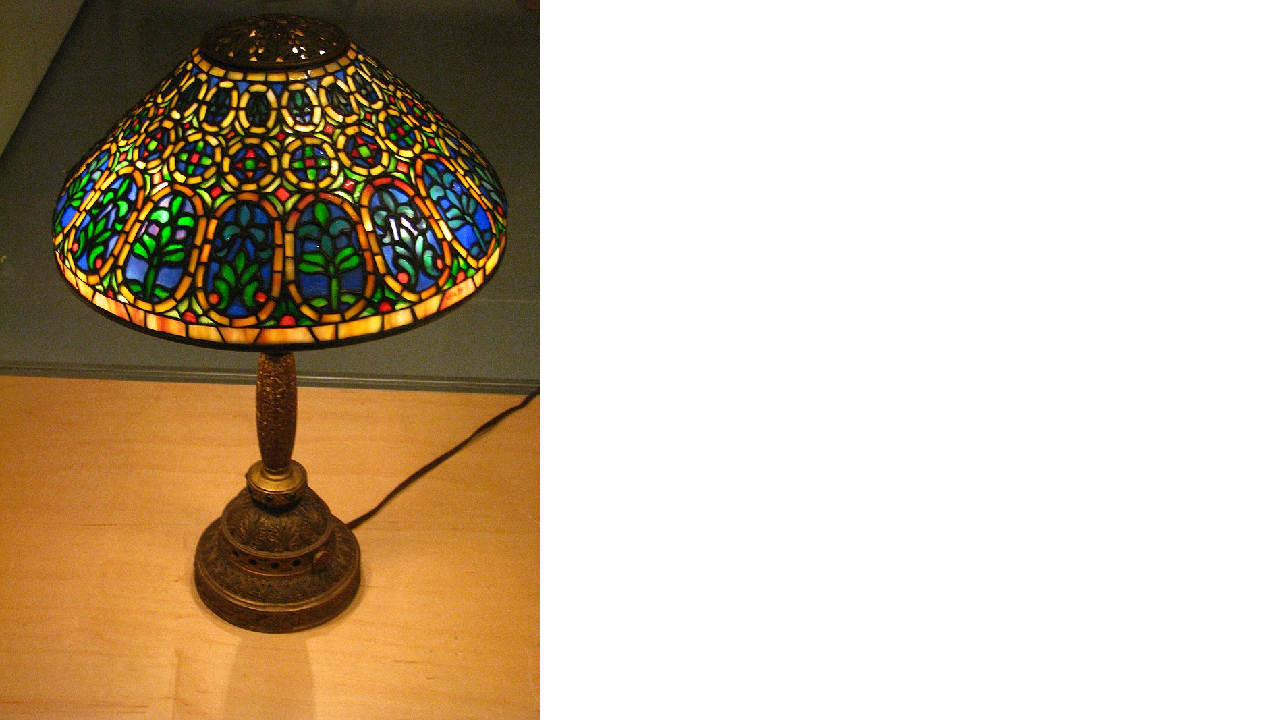Tiffany lamps have a fascinating history that dates back to the late 19th century. The mastermind behind these exquisite creations was Louis Comfort Tiffany, the son of Charles Lewis Tiffany, the founder of Tiffany & Co.
In the 1890s, Louis Tiffany was inspired by the Arts and Crafts Movement and the Aesthetic Movement, which focused on craftsmanship and the beauty of nature. He sought to create decorative objects that were both functional and artistic. Around 1895, Tiffany began experimenting with stained glass to produce intricate lampshades.
The iconic Tiffany lamps are characterized by their stained glass shades, often adorned with vibrant colors and intricate patterns. The leaded glass technique allowed for the creation of detailed and multi-colored designs, giving each lamp a unique and mesmerizing quality.

Tiffany Studios "Venetian" desk lamp ca. 1910-1920. Source: wikipedia
Tiffany collaborated with skilled artisans, including Clara Driscoll, who played a significant role in designing many of the lampshades. The designs often featured nature-inspired motifs, such as flowers, dragonflies, and peacock feathers.
The lamps gained immense popularity during the Art Nouveau movement, and they continue to be highly sought after today as valuable collector's items. The distinctive beauty and craftsmanship of Tiffany lamps have left an indelible mark on the world of decorative arts. It's amazing how a blend of artistry and innovation can create something that stands the test of time.
Creating stained glass for Tiffany lamps is a meticulous and artistic process that involves skilled craftsmanship. Here's a simplified overview of the steps involved:
Design: The process begins with a detailed design. Louis Comfort Tiffany and his team of designers, including Clara Driscoll, often drew inspiration from nature. The intricate patterns and vibrant colors were integral to the overall beauty of the lamp.
Glass Selection: Choosing the right glass is crucial. Tiffany used a variety of colored and textured glass to achieve the desired effect. The glass sheets were carefully selected based on color, transparency, and texture.
Cutting: Artisans then carefully cut the selected glass sheets into the desired shapes using pattern templates. This step requires precision to ensure that each piece fits perfectly into the overall design.
Copper Foiling: Once the glass pieces are cut, they are wrapped with thin strips of copper foil around the edges. This copper foiling serves as a means to hold the pieces together and is an essential part of the leaded glass technique.
Assembly: The copper foiled glass pieces are then carefully arranged and soldered together. This soldering process creates a sturdy and cohesive structure for the lampshade. The seams are soldered meticulously to create a smooth and polished finish.
Patina and Finishing: After assembly, a patina is applied to the soldered seams to give them an aged or antique appearance. This step enhances the overall aesthetic of the lamp. The finished lamp is then polished to achieve a final lustrous look.
Base and Assembly: The lampshade is paired with a metal base designed to complement the overall style of the lamp. The base provides support and stability to the entire structure.
(1).jpg)
Table lamp, c. 1899-1902, Tiffany Studios, Tiffany Glass and Decorating Comapny.Source: wikipedia
The combination of artistic vision, craftsmanship, and attention to detail makes each Tiffany lamp a unique and timeless piece of art. The process remains a testament to the dedication and skill of the artisans who contribute to the creation of these beautiful stained glass masterpieces.
Tiffany lamps are still admired and sought after by antique connoisseurs and dealers around the world.
Cover image: A Louis Comfort Tiffany & Co. Daffodil leaded glass table lamp (shade shown), designed by Tiffany's head designer, Clara Driscoll. Source: wikipedia


.jpg)